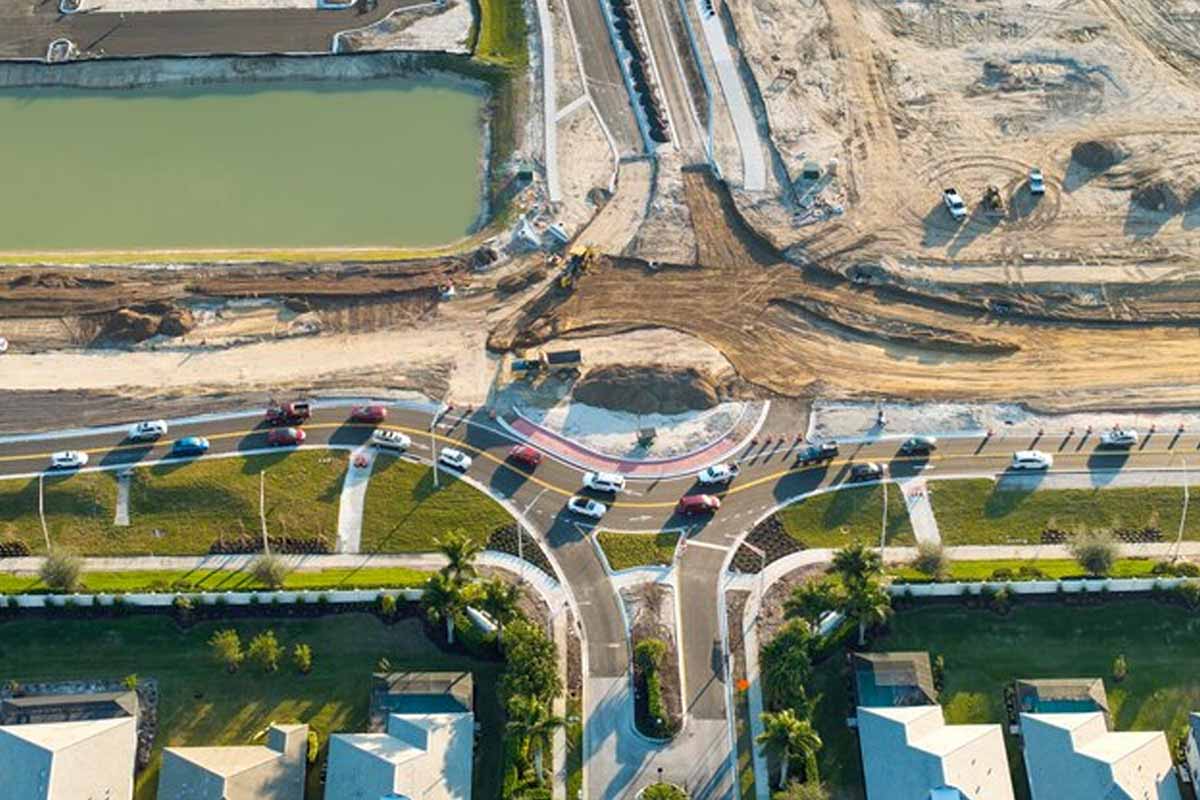Every road tells a story about how people move, wait, and decide. Across American highways, a subtle revolution is reshaping those stories. Something new is replacing what drivers once took for granted, signaling a quiet farewell to roundabouts. At first glance, it seems like a simple change in direction, yet behind it lies a deeper rethink of how intersections breathe, flow, and protect those who travel through them.
Why roundabouts aren’t always the safest fix
Intersections concentrate conflict points, so design choices matter more than aesthetics. Large circles can stall main corridors, turning cures into choke points. Building overpasses costs dearly and complicates access. Rural feeders join fast highways, widening speed gaps and magnifying errors. Even fans of roundabouts admit some sites demand another playbook.
Argentina offers a clear warning. On secondary routes, drivers accelerate to merge or brake to exit, and the speed difference triggers impacts. Left-turn darts across fast traffic raise risk again. Because patterns repeat daily, small frictions snowball into serious collisions. Minor confusion multiplies when weather or glare reduces visibility.
Engineers therefore look beyond familiar shapes and emphasize movement discipline. They ask how to reduce angle crashes without freezing flow. They weigh costs with lifesaving potential, avoiding designs that seem elegant yet clog easily. Where budgets are tight, smarter geometry must deliver safety gains while preserving throughput.
How the RCUT reshapes decisions at the junction
The Restricted Crossing U-Turn changes the most perilous moves by removing direct lefts and straight crossings. From a side road, drivers first turn right, then travel roughly 500 to 1,300 feet. A dedicated left lane enables a controlled U-turn that feeds safely into the mainline.
When the goal is simply to cross, the sequence continues with a second right turn. Because the intersection stretches in space, drivers tackle tiny steps instead of one high-risk leap. Main lanes keep priority, so through traffic holds speed, which preserves capacity and stabilizes queues steadily.
This geometry feels intuitive because choices arrive in order. Although some compare it to elongated circles, the RCUT avoids merge turbulence common near big nodes. Even where cities considered roundabouts, they often prefer this layout on fast arterials with heavy through movement. It reduces hesitation at decision points.
How RCUTs outperform roundabouts on busy highways
Safety improves because perpendicular crossings and direct lefts disappear. According to the Federal Highway Administration, RCUT projects can cut total crashes by up to 54 percent. They also reduce injury crashes by about 70 percent. Fewer angle conflicts also mean simpler sightlines and fewer panic stops at peak hours.
Flow improves as well because the mainline stays the star. Signals, where used, run fewer phases, so green time serves through traffic and keeps platoons intact. Field reports from several North American corridors describe shorter queues and steadier travel times after installation. They also report fewer shockwaves during rush periods.
Drivers feel the difference because decisions stack in a predictable rhythm. The right-turn first sequence smooths merging, then the U-turn finishes the move cleanly. Where cities once debated large roundabouts, they now deploy RCUTs to preserve speed. They also trim crash exposure, which lowers stress for commuters.
What adoption demands: signage, education, and clear rules
Building the layout is only half the task; teaching it completes the safety payoff. Clear signs, consistent markings, and strong communication help drivers anticipate the right-turn first step. Agencies align regulations and outreach so the sequence feels normal quickly, rather than unfamiliar or risky during early weeks.
Culture shapes expectations, so history matters. Places long attached to big circles may doubt the U-turn idea at first, yet results win minds quickly. Where officials once leaned on roundabouts, they now weigh context more carefully. They match tools to corridors, speeds, budget realities, and observed outcomes.
Argentina illustrates the stakes again. On some highways, drivers must dive from slow lanes into fast streams to complete a left, which invites chaos. RCUT geometry supplies a left-turn lane beginning near the junction. Drivers stage safely before merging across high-speed traffic, especially under pressure.
Costs, field experience, and why momentum keeps building
Budgets steer choices, and grade separation rarely comes cheap. Overpasses solve conflicts but demand massive structures, complex ramps, and long timelines. RCUTs deliver many of the same safety benefits with paint, medians, and targeted openings. That stretches limited funds while speeding deployment on busy corridors that need help now.
Materials from the Kentucky Transportation Cabinet and other agencies describe projects that trimmed delays and collisions after conversion. Because movements break into simple pieces, drivers report calmer merges and fewer last-second lunges. What surprises skeptics is how fast habits adapt when the path becomes obvious, and attention stays forward.
Personal experience echoes the data. A sudden left across fast traffic once felt dicey at a rural crossroad. An RCUT nearby flowed naturally even at speed. That small shift from guesswork to choreography shows why roundabouts are not the only option. It supports safer, smoother travel for everyone.
What drivers gain when design quietly does the hard work
RCUTs trade drama for rhythm, which makes everyday trips feel calmer and safer. Because tasks arrive in sequence, attention stays forward and stress drops even during rush periods. Costs shrink without sacrificing results, so more corridors can upgrade. For communities comparing big circles with fresher ideas, the case grows stronger each month. Roundabouts become one option among many rather than the default shape everywhere. Data from early deployments keep reinforcing the pattern with measurable crash reductions.
